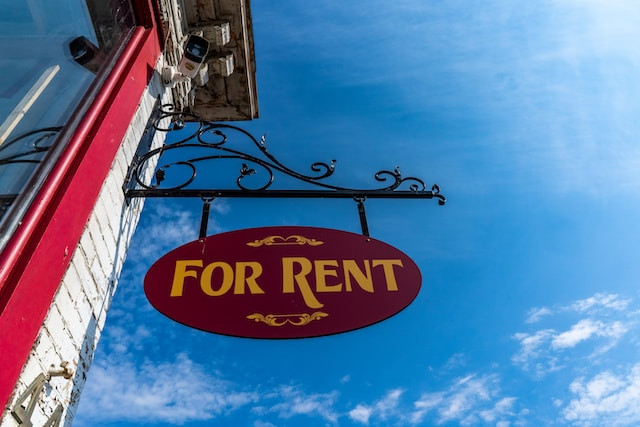Lease agreement, rental agreement, tenancy agreement, rent agreement, rental contract, lease, housing lease agreement, landlord tenant agreement, housing rental agreement, housing contract, leasing contract, property rental agreement.
These are the terms you may have come across when looking for and renting accommodation for a short, medium, monthly rentals or long-term period. Also, you may have heard of them if you have decided at some point to become a landlord and rent out your property.
- Definition
- Difference between renting and leasing
- Similarities between leasing and renting
- Pros and cons of leasing
- Pros and cons of renting
- Types of lease agreements
- Common lease issues
- Important lease communications
- Lease relationship dynamics
- How to read a lease agreement
- How to create a lease agreement
In this guide, tenants, landlords, and property owners will find information about rental agreements that will enable them to clearly understand their rights and obligations and ensure a positive rental experience based on a sound legal basis.
Let us first discuss the definition of leasing and the difference between leasing and renting.
Definition of lease
What is a lease? A lease is an agreement that explains the conditions when someone rents something - in this case, property - from another person. It ensures the tenant (also called the lessee) can use the property and promises the property owner or landlord (known as the lessor) regular payments for a certain time.
If either the tenant or the landlord doesn't follow the agreement, there are consequences.
What's the difference between renting and leasing?
While people often use these terms interchangeably, there are some technical differences between a lease and a rental agreement, knowing which can decide which agreement is more suitable for you: rental or lease agreement.
The primary distinction lies in the duration they span. Typically, a rental agreement is for a short term, typically around 30 days. On the other hand, a lease contract is geared towards longer periods, commonly lasting 12 months, though 6 and 18-month contracts are also frequent.
Note: Some agreements are referred to as an "accommodation agreement.” This is a broader term that can encompass different types of agreements beyond the traditional residential lease. It may include provisions for certain facilities or amenities such as parking, storage, or recreational facilities such as pools or gyms.
Similarities between leasing and renting
Find perfect apartments for rent in Portugal
Now that we’ve discussed rent vs lease, let’s examine the similarities between lease and rental agreements:
Time specificity:
Both leasing and rental agreements are designed for a specific duration, outlining the agreed-upon time frame for occupancy. This ensures clarity and mutual understanding regarding the period of tenancy.
Security deposit:
In both cases, a security deposit is a common practice. This deposit serves as a financial safeguard for the landlord, covering potential damages caused by the renter during their stay. Typically, the landlord refunds this deposit at the conclusion of the lease or rental term, provided there are no significant issues.
Responsibility clarifications:
These agreements specify the responsibilities of both parties regarding maintenance and utility costs. The document clearly outlines which maintenance tasks the property owner is obligated to handle and which responsibilities fall on the renter. Similarly, it details the division of costs related to utilities, ensuring transparency and avoiding disputes.
Usage guidelines:
Both lease and rental agreements establish rules for property usage. These include policies on smoking and whether pets are allowed, any restrictions on their number or size, and conditions for keeping pets on the premises.
Additionally, these agreements often detail the landlord's right to enter the property, ensuring that both parties understand and respect each other's rights to access the rented space. These guidelines contribute to a harmonious living arrangement and help prevent misunderstandings.
Note: Some online platforms do not require a deposit. On Flatio, for example, landlords cannot require a deposit for stays of less than 180 days (6 months). However, there are exceptions in certain regions of some countries, such as Spain, where landlords are required by local law to ask for a deposit, regardless of the length of stay. In such cases, a deposit is charged even for short-term stays.
Pros and cons of leasing

When it comes to leasing, there are both advantages and disadvantages. However, if you seek a housing solution for the long term, opting for a lease provides a greater sense of security.
Find perfect apartments for rent in Spain
Advantages of leasing
Greater stability
The primary advantage of a lease lies in the stability it offers. Throughout the entire contract duration, you have the assurance of residing in your home without the uncertainty of sudden changes. This arrangement is especially beneficial for those committed to a long-term stay in a particular place.
Rent stability
Once you commit to a lease, the landlord is bound by the terms set forth in the document, and this includes the rent amount. You are shielded from rent increases for the entire duration of the lease, providing financial predictability and avoiding unexpected changes in your monthly expenses.
Rent-controlled renewal
In areas with rent control measures, there may be provisions allowing you to renew your lease at the same rate or with a minimal percentage increase at the end of the lease term. This can make living in expensive cities more financially manageable for some individuals.
Disadvantages of leasing
Less flexibility
Committing to a lease implies reduced flexibility. You agree to stay in the designated place for the specified duration of the contract. This lack of flexibility may lead to paying higher rent than those who have the freedom to move when rental prices decrease in the area.
Challenges in sudden moves
Life changes, such as a job opportunity in another part of the country or the need to return home for a family emergency, can pose challenges with a long-term lease. While some landlords permit subletting, making leasing more adaptable, sudden moves can still be cumbersome.
Consequences for breaking a lease
Breaking a lease comes with consequences, potentially resulting in the loss of your deposit or being obligated to pay the remaining rent. It is crucial to thoroughly review the terms of the lease to understand the specific consequences associated with early termination.
Pros and cons of renting

If flexibility tops your list of priorities, opting for a rental agreement is the way to go.
Advantages of renting
Short-term flexibility
A monthly rental agreement becomes ideal when you anticipate a short stay in town, perhaps for an internship, or if you've just arrived and need a temporary place while exploring other housing options.
Adaptable to life changes
Unlike a lease agreement, renting accommodates significant, unforeseen life changes that may require you to relocate. This flexibility is particularly valuable when faced with unexpected circumstances.
Renegotiation opportunities
Many rentals transition to a month-to-month arrangement after the initial 30 days. While you won't be signing a new rental agreement monthly, this setup provides opportunities to renegotiate certain terms, such as requesting permission from the landlord to have a pet.
Disadvantages of renting
Trade-off between flexibility and stability
While renting offers flexibility, it comes at the cost of stability. Both you and the landlord have the option to end the rental contract at the end of the 30-day period. This flexibility can be liberating, but it may pose challenges if you wish to continue staying, especially if the decision is not entirely yours.
Note: One crucial thing to pay attention to in a rental agreement is whether the landlord has specific rules about when and how they'll let you know if you need to leave when the rental agreement is ending. This process is called "tenant screening," and it helps you know all the important information before you decide to rent a place.
Rent increases
In many locations, landlords can raise the rent each time the contract renews. This means that if property values increase in your neighborhood, your landlord may want to adjust your rent accordingly. A sudden rent increase can significantly impact your decision to stay or move. It's crucial to understand the specifics of when and how much your landlord can raise the rent, as outlined in your contract. Just like asking you to vacate, they may be required to provide notice within a specified time frame for rent increases.
Types of lease agreements
Find perfect apartments for rent in Budapest
Understanding a rental / lease agreement involves more than just knowing its components. The way these components are presented and carried out depends on the specific type of agreement you're dealing with.

Traditional lease agreements
One notable advantage of traditional lease agreements is the opportunity for personal interaction. Face-to-face meetings play a key role in building trust and rapport between landlords and tenants. This direct interaction allows both parties to assess each other's intentions and reliability. Additionally, having physical documents adds a sense of importance and formality to the agreement.
If there are any questions or uncertainties about a clause or term, they can be promptly addressed during these in-person meetings, ensuring that both parties fully comprehend the terms they are signing. Moreover, traditional in-person agreements have the option to be notarized upon signing, adding an extra layer of validation.
Challenges
Traditional lease agreements come with their own set of challenges. The process of finalizing the agreement can be time-consuming, especially if scheduling conflicts arise or multiple meetings are necessary for negotiations.
Geographic constraints can be a limitation for property managers overseeing properties in different regions or for tenants relocating from distant areas, as in-person meetings become a logistical hurdle.
Lastly, there's the issue of document storage. Physical documents require careful handling to prevent loss, damage, or unauthorized access. Retrieving or sharing them might not be as convenient as it is with digital documents.
Online lease agreements
On the other hand, online lease agreements are becoming popular because they're super convenient. You can make, change, and sign these agreements from anywhere, and it takes just a few minutes. No need to plan or go to in-person meetings.
Digital agreements offer the flexibility for landlords to easily make revisions based on negotiations or changing terms, ensuring that the most up-to-date version is readily accessible. Storage solutions in the digital realm, such as cloud platforms, simplify the storing, accessing, and sharing of these documents. Additionally, the shift towards online agreements aligns with environmental considerations by reducing paper usage.
Challenges
Online agreements are not without their challenges. Ensuring compliance with e-signature laws, which may vary by jurisdiction, is crucial. The absence of personal interaction between tenants and landlords can sometimes result in impersonal relationships, potentially missing the nuanced understanding and trust-building that in-person interactions foster.
Moreover, technical issues such as glitches, server downtime, or platform malfunctions can hinder the agreement process. Additionally, the ever-present threat of cyber threats necessitates robust cybersecurity measures to safeguard online agreements. Protecting against unauthorized access, breaches, or the loss of sensitive information is paramount.
Some tenants prefer to sign a physical copy of their online rental agreement with their own handwritten signature in addition to the electronic signature. They may do this for reasons such as having a tangible record, personal verification, and a sense of traditional commitment.
Ultimately, the decision between traditional and online lease agreements often hinges on the specific context, requiring a careful consideration of the advantages and potential challenges associated with each scenario.
Find perfect apartments for rent in Italy
Month-to-month leases
The world of leasing is always changing to keep up with shifts in society, the economy, and the population. One noticeable change in recent times is the increasing popularity of month-to-month leases, especially in busy city centers and dynamic markets.
In bustling cities that attract a mix of people, from young professionals to those with temporary job assignments, there's a growing demand for flexible living arrangements. These individuals often prefer temporary setups because their work or education situations can be unpredictable, or they simply value a flexible lifestyle.
Month-to-month leases give tenants the freedom to adjust to life's uncertainties without committing to a long-term stay. This is particularly appealing in fast-paced cities where personal and professional situations can change quickly. Recent global events, like economic downturns and a pandemic, have emphasized the importance of adaptability, making flexible lease terms even more attractive.
For experienced landlords, month-to-month leases cater to a significant market segment but introduce some unpredictability in revenue due to potential frequent tenant turnover. To address this challenge and encourage longer tenant stays, savvy landlords have developed strategies.
One effective strategy is to regularly upgrade properties. Keeping the property modern, functional, and visually appealing enhances tenant satisfaction, encouraging longer stays. This might involve making cosmetic updates, incorporating smart home technologies, or aligning amenities with current trends.
Another tactic is offering rent incentives. These can take different forms, such as a discount for consistent on-time payments, a reduced rate for tenants committing to stay beyond the initial month, or even perks like free parking or gym memberships.
By combining the flexibility of month-to-month leases with tangible benefits for longer stays, landlords can strike a balance. This approach addresses tenants' desire for flexibility while ensuring stability in rental income.
In the end, while month-to-month leases pose specific challenges for landlords, with strategic planning and an understanding of market dynamics, they can be integrated profitably into an investment portfolio. This allows landlords to meet modern tenant demands while safeguarding their returns.
Fixed-term leases

In the diverse landscape of lease arrangements, mid-term rentals, typically spanning six months to a year, emerge as a straightforward and predictable option. For landlords, this translates to stability. Securing a tenant for a specified duration guarantees a consistent income flow, mitigating uncertainties often associated with more flexible lease structures.
Additionally, this lease structure facilitates precise financial planning, providing valuable insights for landlords considering future investment choices or property improvements. While they may not provide the same adaptability as month-to-month leases, their dependability ensures an enduring appeal.
Room rental agreements
The expansion of cities and a continually growing need for housing has led to inventive leasing approaches. One such innovation is the room rental agreement within shared living spaces or co-living setups. Landlords opt to lease individual rooms instead of renting the entire property to a single tenant.
This approach has the potential to maximize returns, particularly in sought-after urban locations. However, this leasing model requires careful consideration during the agreement drafting process. Clauses must clearly outline responsibilities, guidelines for shared space utilization, and protocols for resolving roommate disagreements. This meticulous crafting ensures harmonious cohabitation within the shared living environment.
Subleases
Subleasing holds a distinctive position in the realm of rental agreements, catering to a specific yet growing segment of tenants. While rooted in real estate fundamentals, subleasing brings forth opportunities and challenges that differ from traditional leasing arrangements.
Emerging trends
Traditionally, subleasing served tenants tied to a lease, offering a way to enhance their living situation without violating their primary agreement. Whether it's a student embarking on a semester abroad or someone on an extended vacation, subleasing can help offset costs for the tenant.
However, the recent uptick in its popularity is linked to economic factors. With urban living costs soaring, many tenants see subleasing a portion of their living space, like a spare room, as an effective means of managing expenses. Furthermore, as shared living spaces and co-housing solutions gain traction, subleasing naturally becomes an extension, allowing primary leaseholders to adapt their living arrangements based on changing needs without renegotiating their main lease.
Find perfect apartments for rent in Thailand
Risk management
Due to their nature, subleases introduce an additional party into the leasing equation, necessitating a more rigorous risk management approach.
One primary strategy involves clear communication and vetting. Landlords can stipulate that primary tenants must obtain explicit approval for any subleasing endeavors, ensuring oversight and an opportunity to review the potential subtenant.
Introducing an extra layer of security can be achieved by requiring larger security deposits specifically designated for residential subleasing scenarios. This not only discourages potential misuse of the property but also provides a financial buffer for any unforeseen complications.
Lastly, reinforcing the original tenant's liability, even during sublease periods, ensures a clear chain of accountability.
Rent-to-own agreements
In dynamic real estate landscapes, rent-to-own agreements emerge as a savvy strategy for landlords. Tailored to tenants in search of a rental with aspirations of property ownership, these arrangements serve as a practical bridge.
Granting tenants the choice to purchase upon lease completion opens avenues to prospective homeownership, enhancing the property's allure across a wide spectrum.
This presents landlords with an opportunity to draw in dedicated tenants and potentially future property buyers, particularly in areas where real estate transactions may be slow-paced.
Common lease issues

Renting can get tricky sometimes. Whether it's people staying in their rented place for too long or not following the rules, these problems show why having clear agreements is super important. Let's dive into common lease problems and why it's crucial to have straightforward lease agreements to deal with them.
Staying longer than planned
One common issue in renting is when people stay in a place after their lease ends. Some might do it accidentally, while others might choose to stay longer. This can be a problem, especially if the property is supposed to have new tenants or be used differently. For landlords, understanding the rules and including them in the lease is key to making sure things go smoothly and avoiding losing money.
Breaking the rules
Breaking the rules in a lease can mean different things, like not paying rent on time or changing things in the property without permission. Even if the rule seems small, it can turn into a big problem or cost a lot of money. Smart landlords know it's important to have clear rules in the lease, check the property regularly, and talk openly to solve problems quickly.
In both situations-dealing with people staying too long and fixing rule-breaking - it all comes down to having a clear and detailed agreement. A good lease is like a roadmap and protection, setting rules and ways to solve problems. For experienced landlords, it's not just about having an agreement; it's about making sure it can handle challenges, keeping the property safe and making money.
Important lease communications
Find perfect apartments for rent in Prague
In renting, it's crucial to talk clearly to avoid problems or surprises. Effective communication is like a powerful tool for landlords. By talking openly and on time, landlords can prevent issues and handle any problems during the lease.
Let's look at some essential lease communications:
Rent increase notices
If the rent needs to go up because of market changes or property improvements, it's important to tell tenants. The notice should be clear, explaining why the rent is going up, and given well before the change. This helps keep the relationship honest.
Maintenance and repair information
When there's a plan to upgrade or fix something in the property, tenants should know beforehand. Sharing this information helps tenants plan and makes sure the work causes as little trouble as possible. It's about respecting the tenant's time and privacy.
Lease renewal invitations
As the lease end approaches, landlords can invite tenants to renew it. This is a chance to communicate any changes to the lease and express the wish to continue the relationship. It gives tenants time to decide if they want to stay.
Property inspection schedules
Landlords often check the property regularly to keep it in good shape. Sharing the inspection schedule beforehand is polite and lets tenants get ready. It's also a chance to talk about any concerns the tenant or landlord may have.
Notice to vacate
This is more than a letter - it's a formal way to say when the lease is ending. For landlords, it's important to plan for property updates, find new tenants, or adjust to market changes. It gives everyone a clear timeline and helps avoid long periods without tenants.
Landlord introduction letter
Sending an introduction letter from the landlord might seem simple, but it sets the tone for the tenant-landlord relationship. It's a chance to start communication, explain expectations, and share important details. This small step makes interactions smoother and prevents misunderstandings.
Lease relationship dynamics

Every real estate transaction relies on a set of defined roles and responsibilities. At the core of leasing, the dynamic between the landlord and the tenant shapes the foundation. A shared understanding of these roles ensures seamless interactions and serves as a safeguard against potential disputes.
Lessee vs. Lessor
Central to a lease agreement are two key figures: the lessee and the lessor. The lessee, or tenant, is the entity renting the property, while the lessor, often the property manager, owner, or landlord, provides the property for lease. This relationship is symbiotic; the lessor offers property and amenities, and the lessee provides financial returns.
Although the roles may seem straightforward, the layers of each party's rights, obligations, and expectations can be complex.
Role-specific responsibilities
Lessor (Landlord/Property owner):
- Property maintenance: The lessor is responsible for ensuring the property remains habitable and safe. This may involve periodic repairs, structural maintenance, or addressing pest infestations.
- Legal adherence: Compliance with local and state-specific rental laws is crucial. This includes tenant rights, disclosure requirements, and eviction procedures.
- Financial management: Properly managing security deposits, offering transparency in additional charges, and providing timely receipts for payments fall under the lessor's responsibilities.
Lessee (Tenant):
- Timely payments: Tenants must consistently and punctually pay rent as stipulated in the lease agreement.
- Property care: While natural wear and tear are expected, the lessee must address damages caused by negligence or misuse, either by repairing the damage or compensating the landlord for repairs.
- Adherence to lease terms: Tenants are obligated to abide by the rules outlined in the lease agreement, which may include clauses on subletting, pet policies, or noise restrictions.
- Open communication: Maintaining open communication with the landlord is important. Reporting issues, discussing concerns, or notifying the property manager about extended absences fosters a positive landlord-tenant relationship.
The importance of mutual respect
A successful landlord-tenant relationship goes beyond rights and responsibilities - it hinges on mutual respect. Recognizing the value each party brings and working collaboratively leads to a harmonious living environment.
Understanding and respect can foster a mutually beneficial partnership, whether in a short-term lease or a long-term rental agreement. By acknowledging their roles in the relationship, landlords and tenants can navigate potential challenges more effectively, creating a smoother and more cooperative leasing experience.
How to read a lease agreement (for tenants)
If you've already decided to rent instead of buying a home, you'll go through the steps of filling out a rental application and undergoing a background check. Once you've successfully navigated these steps, the next crucial stage is signing the rental lease agreement. However, before you put pen to paper, it's vital to grasp the language in the contract to avoid any unpleasant surprises.
You may be wondering: What does a lease look like? The elements frequently found in a rental lease and their meanings are explained in more detail below.
Note: Each country, city and even area may have different rental regulations. So make sure you understand the national and local laws to have a pleasant rental experience.
Rent term and monthly rent amount
Lease agreements often run for one year, with the monthly rent amount clearly stated. The lease should also outline any late charges for overdue payments. If there's ambiguity, especially regarding rent or lease terms, request written clarification from the landlord.
Rent payment instructions
While most leases require rent payment on the first of the month, some offer a grace period. Understand the terms for late fees and ensure timely payments to avoid additional charges.
Security deposit
This upfront payment protects the landlord in case of property damage. The lease should specify under what conditions the deposit may be withheld and include a deadline for its return.
Pets
If allowed, pets may incur additional fees. The lease should detail what types of pets are allowed, their number, and associated fees. Violating pet policies can lead to lease breaches.
Additional fees
Beyond the security deposit, landlords may charge various fees, such as parking fees, utilities, trash service fees, cleaning service fees, administrative fees, and rental tax fees. Ensure all fees are clearly outlined in terms of amounts and frequency.
Lease termination deadline
Be aware of the time frame for notifying your landlord about moving out or renewing the lease. Failing to adhere to termination deadlines may result in financial obligations.
Maintenance
Understanding the landlord's responsibilities for maintenance and repairs is crucial. The lease should specify what the landlord is accountable for and provide a timeline for completing repairs.
Subletting
Review the lease for provisions regarding subletting. Some landlords permit it, while others prohibit it. Understand the implications and potential liabilities before subletting.
Early termination
In the event of unforeseen circumstances, an early termination clause can be beneficial. Negotiate advance notice and associated fees for breaking the lease early.
Roommates
If renting with others, the lease typically includes all names. Joint responsibility ensures rent payment and adherence to lease terms. Understand the shared obligations with your co-tenants.
Eviction
Understand the eviction process outlined in the law. It involves providing notice to address issues before initiating legal proceedings. Each city and country has different laws around tenancy termination.
How to create a lease agreement (for landlords): A step-by-step guide

Crafting a residential lease agreement involves a series of essential steps:
Gather information
Collect comprehensive details about the rental property, the landlord, and the prospective tenant.
Specify terms
Clearly outline the lease term, whether it's a fixed period or month-to-month. Define the rent amount and establish the due date for the monthly rent payment.
Include clauses
Address various scenarios in the agreement, such as the process for returning the security deposit, procedures if the tenant decides to terminate the agreement prematurely, and the definition of wear and tear. If you don’t know how to write a clause, look for examples of that clause to get an idea of the details that should be included. Search for example: pet clause in lease agreement.
Utilize templates
Take advantage of lease agreement templates or use a standard lease agreement if creating one from scratch seems daunting. Numerous free templates in PDF or Word format and other editable forms are available online.
Regardless of whether you want to write a short-term lease agreement, mid-term lease agreement, or long-term lease agreement, you can download our templates here and tailor them to your specific terms, ensuring compliance with both national and local laws. This offers a convenient and time-saving approach to drafting a residential lease agreement.
Review and legalize
Before finalizing, consider having the agreement reviewed by a lawyer to ensure compliance with relevant laws. It's crucial that both the landlord and tenant fully understand all terms and conditions before signing.
By following these steps, landlords can create a comprehensive and legally sound residential lease agreement. Additionally, the availability of free online templates streamlines the process, offering flexibility to adjust terms according to individual preferences and legal requirements.
Pro tip: Rental verification form
If you're a tenant...
When renting accommodation, the landlord may ask for a rental verification form to confirm your previous rental behavior and payment history. You can also request this form if you're applying for a loan or another apartment, as it has official value.
If you're a landlord...
You can easily assess a prospective tenant's rental behavior in terms of responsibility, trustworthiness, and financial stability with the help of a rental verification form, ensuring less hassle and greater peace of mind when renting.
Flatio for tenants and landlords
What sets Flatio apart from similar rental housing platforms is that it offers lawyer-verified, legally binding lease agreements that can be used as proof of address and for visa purposes.
Translated into multiple languages, our rental agreements can also save landlords a lot of time, energy, money and legal hassle as they are created based on the latest national and local regulations.
Further details on lease agreements at Flatio can be found on the following pages in our Help Center:
Whether you are a tenant or a landlord, we look forward to seeing you on Flatio!
Disclaimer: The legal information published on Flatio is for informational purposes only and does not constitute legal advice.
(Sources: Investopedia, Bungalow, Azibo, Bankrate)
